Microstructure of Deposits Sprayed by a High Power Torch with Flash Boiling Atomization of High-Concentration Suspensions
Abstract
:1. Introduction
2. Materials and Methods
2.1. Experimental Setup and SPS Conditions
2.2. Suspension and Feed Material
2.3. Visualization and Characterization Measurements
2.4. Flash Boiling Atomization Condition
3. Results and Discussion
3.1. Microstructure of TiO2 Deposits Fabricated with High Torch Power
3.2. Deposits Fabricated with High Solid Content Suspensions
3.3. Deposition Efficiency
3.4. Phase Composition
4. Conclusions
- (1)
- Remarkably high deposition rates could be achieved with the high-power torch and by increasing the solids concentration from 20 wt% to high concentrations such as 55 and 70 wt%.
- (2)
- Deposition efficiency decreases with increasing solid concentrations at low torch power because less energy is available for particle melting under low-power conditions. Conversely, at high torch power, increasing solid concentrations enhances deposition efficiency due to better penetration into the hot region of the plasma jet.
- (3)
- Using suspensions containing 70 wt% of feedstock and varying torch power from 33 kW to 110 kW, a variety of microstructures ranging from dense to highly porous have been achieved. Low torch power and high solids concentration can produce large amounts of unmelted particles, but high torch power and high solids concentration can produce a very dense deposit (mostly composed of well-melted particles).
- (4)
- XRD analysis showed that at low torch power, the anatase content is higher than the rutile content, and the anatase percentage increases with increasing solid concentrations. However, the anatase phase is less dominant at high torch power and would decrease with increasing solid concentrations.
Author Contributions
Funding
Institutional Review Board Statement
Informed Consent Statement
Data Availability Statement
Conflicts of Interest
References
- Vaßen, R.; Kaßner, H.; Mauer, G.; Stöver, D. Suspension plasma spraying: Process characteristics and applications. J. Therm. Spray Technol. 2010, 19, 219–225. [Google Scholar] [CrossRef]
- Fauchais, P.; Etchart-Salas, R.; Rat, V.; Coudert, J.F.; Caron, N.; Wittmann-Ténèze, K. Parameters controlling liquid plasma spraying: Solutions, sols, or suspensions. J. Therm. Spray Technol. 2008, 17, 31–59. [Google Scholar] [CrossRef]
- Fauchais, P.; Montavon, G.; Lima, R.S.; Marple, B.R. Engineering a new class of thermal spray nano-based microstructures from agglomerated nanostructured particles, suspensions and solutions: An invited review. J. Phys. D Appl. Phys. 2011, 44, 093001. [Google Scholar] [CrossRef]
- Seelam, N.; Gugulothu, S.K.; Reddy, R.V.; Burra, B. Influence of hexanol/hydrogen additives with diesel fuel from CRDI diesel engine with exhaust gas recirculation technique: A special focus on performance, combustion, gaseous and emission species. J. Clean. Prod. 2022, 340, 130854. [Google Scholar] [CrossRef]
- Gvozdyakov, D.; Zenkov, A. Improvement of atomization characteristics of coal-water slurries. Energy 2021, 230, 120900. [Google Scholar] [CrossRef]
- Badawy, T.; Xu, H.; Li, Y. Macroscopic spray characteristics of iso-octane, ethanol, gasoline and methanol from a multi-hole injector under flash boiling conditions. Fuel 2022, 307, 121820. [Google Scholar] [CrossRef]
- Guo, G.; Deng, H.; Zhu, C.; Ji, Z. Spatially dependent salinity effect in actively vacuumed spray flash desalination. Desalination 2022, 537, 115868. [Google Scholar] [CrossRef]
- Ivey, J.W.; Bhambri, P.; Church, T.K.; Lewis, D.A.; Vehring, R. Experimental investigations of particle formation from propellant and solvent droplets using a monodisperse spray dryer. Aerosol Sci. Technol. 2018, 52, 702–716. [Google Scholar] [CrossRef]
- Myatt, B.J.; Versteeg, H.K.; Hargrave, G.K.; Long, E.J.; Gavtash, B.; Lewis, D.A.; Church, T.; Brambilla, G. Unlocking further understanding of the atomization mechanism of a pressurized metered dose inhaler. Aerosol Sci. Technol. 2022, 56, 1022–1032. [Google Scholar] [CrossRef]
- Karami, A. Effects of Flashing on Characteristics of Splashplate Nozzle Sprays; University of Toronto: Toronto, ON, Canada, 2015. [Google Scholar]
- Günther, A.; Wirth, K.E. Superheated Atomization. In Process-Spray; Springer: Cham, Switzerland, 2016; pp. 609–645. [Google Scholar]
- Toma, F.L.; Berger, L.M.; Jacquet, D.; Wicky, D.; Villaluenga, I.; De Miguel, Y.R.; Lindeløv, J.S. Comparative study on the photocatalytic behaviour of titanium oxide thermal sprayed deposits from powders and suspensions. Surf. Depos. Technol. 2009, 203, 2150–2156. [Google Scholar]
- Fazilleau, J.; Delbos, C.; Rat, V.; Coudert, J.F.; Fauchais, P.; Pateyron, B. Phenomena involved in suspension plasma spraying part 1: Suspension injection and behavior. Plasma Chem. Plasma Process. 2006, 26, 371–391. [Google Scholar] [CrossRef]
- Meillot, E.; Vert, R.; Caruyer, C.; Damiani, D.; Vardelle, M. Manufacturing nanostructured YSZ deposits by suspension plasma spraying (SPS): Effect of injection parameters. J. Phys. D Appl. Phys. 2011, 44, 194008. [Google Scholar] [CrossRef]
- Fauchais, P.; Etchart-Salas, R.; Delbos, C.; Tognonvi, M.; Rat, V.; Coudert, J.F.; Chartier, T. Suspension and solution plasma spraying of finely structured layers: Potential application to SOFCs. J. Phys. D Appl. Phys. 2007, 40, 2394. [Google Scholar] [CrossRef]
- Marchand, O.; Girardot, L.; Planche, M.P.; Bertrand, P.; Bailly, Y.; Bertrand, G. An insight into suspension plasma spray: Injection of the suspension and its interaction with the plasma flow. J. Therm. Spray Technol. 2011, 20, 1310–1320. [Google Scholar] [CrossRef]
- Rampon, R.; Filiatre, C.; Bertrand, G. Suspension plasma spraying of YPSZ deposits: Suspension atomization and injection. J. Therm. Spray Technol. 2008, 17, 105–114. [Google Scholar] [CrossRef]
- Amrollahy Biouki, S.; Ben Ettouil, F.; Liberati, A.C.; Moreau, C.; Dolatabadi, A. Flash Boiling Atomization of High-Concentration Suspensions in Suspension Plasma Spraying. J. Therm. Spray Technol. 2023, 33, 122–133. [Google Scholar] [CrossRef]
- Alebrahim, E.; Rahaman, M.S.; Moreau, C. TiO2 Photocatalytic Ultrafiltration Membrane Developed with Suspension Plasma Spray Process. Coatings 2022, 12, 1764. [Google Scholar] [CrossRef]
- Bily, A. Development of Titanium Diboride Wettable Cathodes for Aluminium Electrolysis by Suspension Plasma Spray. Doctoral Dissertation, Concordia University, Montreal, QC, Canada, 2023. [Google Scholar]
- Waldbillig, D.; Kesler, O. The effect of solids and dispersant loadings on the suspension viscosities and deposition rates of suspension plasma sprayed YSZ deposits. Surf. Depos. Technol. 2009, 203, 2098–2101. [Google Scholar]
- Garmeh, S. Transportation of High Concentration Suspension Using Visco-Plastic Lubrication. Master’s Thesis, Concordia University, Montreal, QC, Canada, 2019. [Google Scholar]
- Cañas, E.; Rosado, E.; Alcázar, C.; Orts, M.J.; Moreno, R.; Sánchez, E. Challenging zircon deposits by suspension plasma spraying. J. Eur. Ceram. Soc. 2022, 42, 4369–4376. [Google Scholar] [CrossRef]
- VanEvery, K.; Krane, M.J.M.; Trice, R.W. Parametric study of suspension plasma spray processing parameters on deposit microstructures manufactured from nanoscale yttria-stabilized zirconia. Surf. Depos. Technol. 2012, 206, 2464–2473. [Google Scholar]
- Xiong, H.B.; Zhang, C.Y.; Zhang, K.; Shao, X.M. Effects of atomization injection on nanoparticle processing in suspension plasma spray. Nanomaterials 2016, 6, 94. [Google Scholar] [CrossRef]
- Fauchais, P.; Vardelle, M.; Vardelle, A.; Goutier, S. What do we know, what are the current limitations of suspension plasma spraying? J. Therm. Spray Technol. 2015, 24, 1120–1129. [Google Scholar] [CrossRef]
- Vicent, M.; Bannier, E.; Carpio, P.; Rayón, E.; Benavente, R.; Salvador, M.D.; Sánchez, E. Effect of the initial particle size distribution on the properties of suspension plasma sprayed Al2O3–TiO2 deposits. Surf. Depos. Technol. 2015, 268, 209–215. [Google Scholar]
- Jamali, H.; Mozafarinia, R.; Razavi, R.S.; Ahmadi-Pidani, R. Comparison of thermal shock resistances of plasma-sprayed nanostructured and conventional yttria stabilized zirconia thermal barrier deposits. Ceram. Int. 2012, 38, 6705–6712. [Google Scholar] [CrossRef]
- Bernard, B.; Bianchi, L.; Malie, A.; Joulia, A.; Remy, B. Columnar suspension plasma sprayed deposit microstructural control for thermal barrier deposit application. J. Eur. Ceram. Soc. 2016, 36, 1081–1089. [Google Scholar] [CrossRef]
- Carnicer, V.; Orts, M.J.; Moreno, R.; Sánchez, E. Influence of solids concentration on the microstructure of suspension plasma sprayed Y-TZP/Al2O3/SiC composite deposits. Surf. Depos. Technol. 2019, 371, 143–150. [Google Scholar]
- Curry, N.; VanEvery, K.; Snyder, T.; Susnjar, J.; Bjorklund, S. Performance testing of suspension plasma sprayed thermal barrier deposits produced with varied suspension parameters. Deposits 2015, 5, 338–356. [Google Scholar]
- Gan, J.A.; Berndt, C.C. Nanocomposite deposits: Thermal spray processing, microstructure and performance. Int. Mater. Rev. 2015, 60, 195–244. [Google Scholar] [CrossRef]
- Lee, C.; Choi, H.; Lee, C.; Kim, H. Photocatalytic properties of nano-structured TiO2 plasma sprayed deposit. Surf. Depos. Technol. 2003, 173, 192–200. [Google Scholar]
- Khatibnezhad, H.; Ettouil, F.B.; Moreau, C. Photoactive Ce-doped TiO2 and CeO2-TiO2 composite coatings deposited by suspension/solution plasma spray. Mater. Res. Bull. 2023, 166, 112346. [Google Scholar] [CrossRef]
- Liu, Y.; Wu, J.; Lu, H.; Wang, J.; Qu, Y.; Jing, L. Enhanced photocatalytic activities of commercial P25 TiO2 by trapping holes and transferring electrons for CO2 conversion and 2, 4-dichlorophenol degradation. Mater. Res. Bull. 2017, 92, 23–28. [Google Scholar] [CrossRef]
- Fujishima, A.; Zhang, X. Titanium dioxide photocatalysis: Present situation and future approaches. Comptes Rendus Chim. 2006, 9, 750–760. [Google Scholar] [CrossRef]
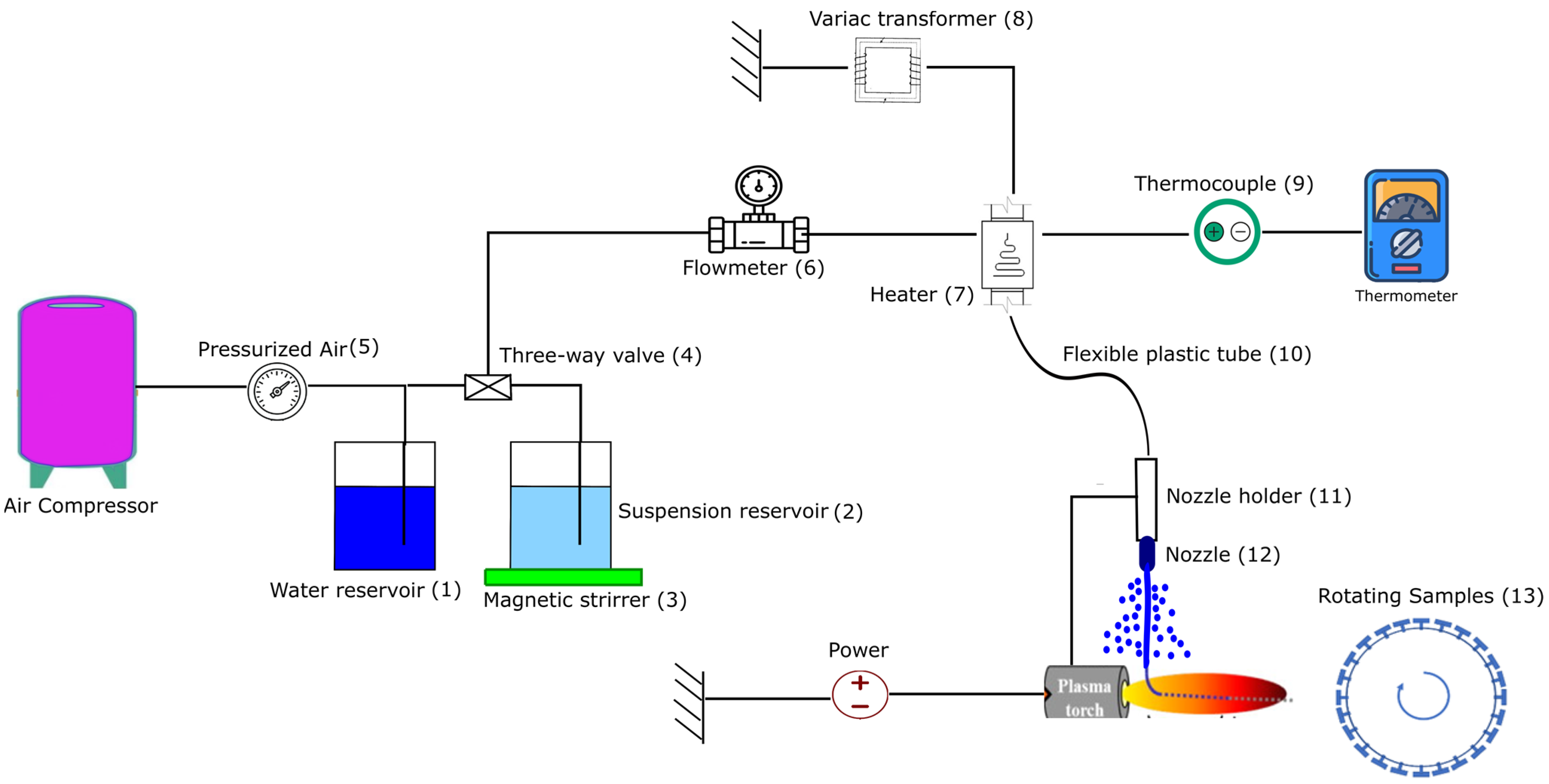
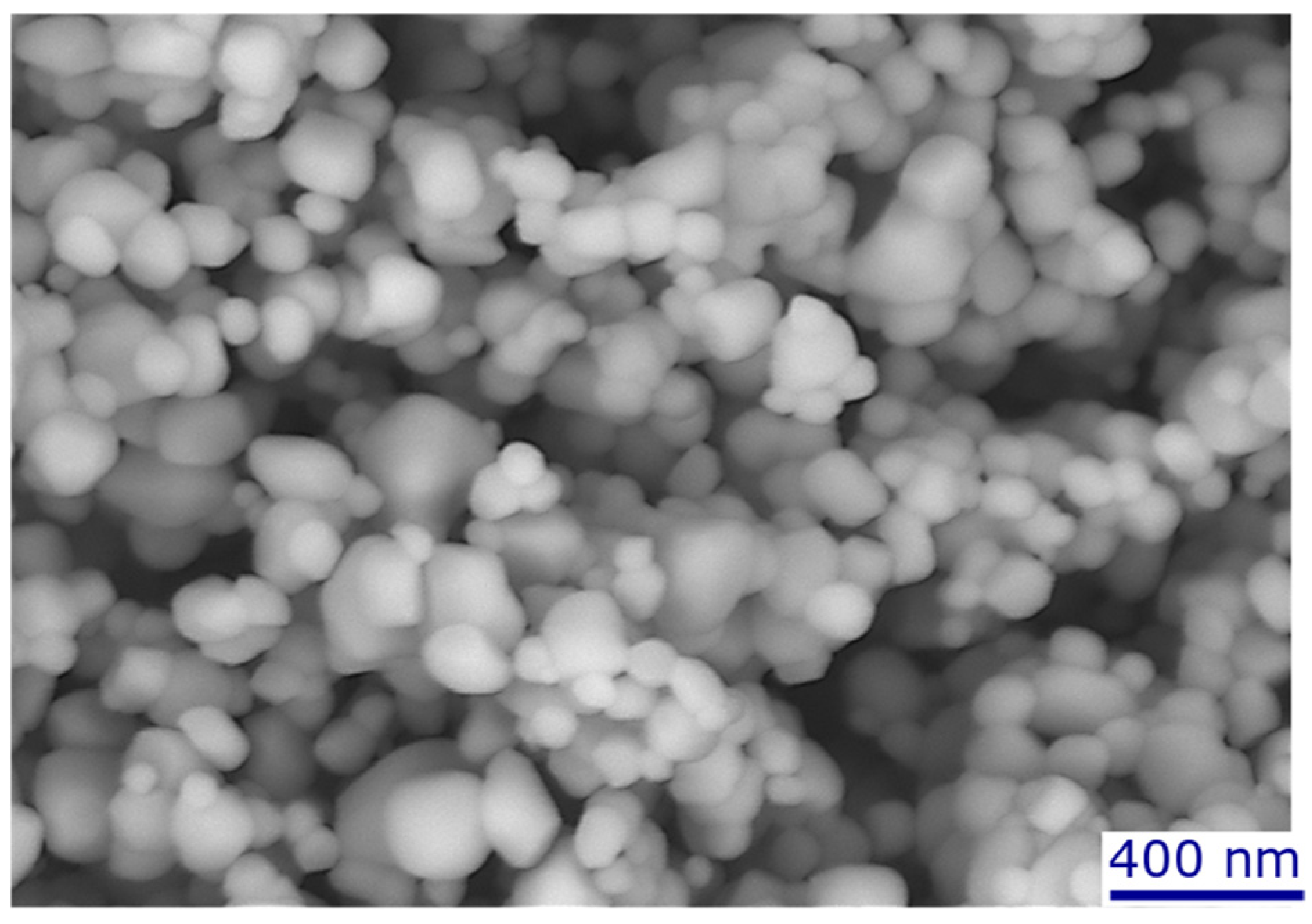
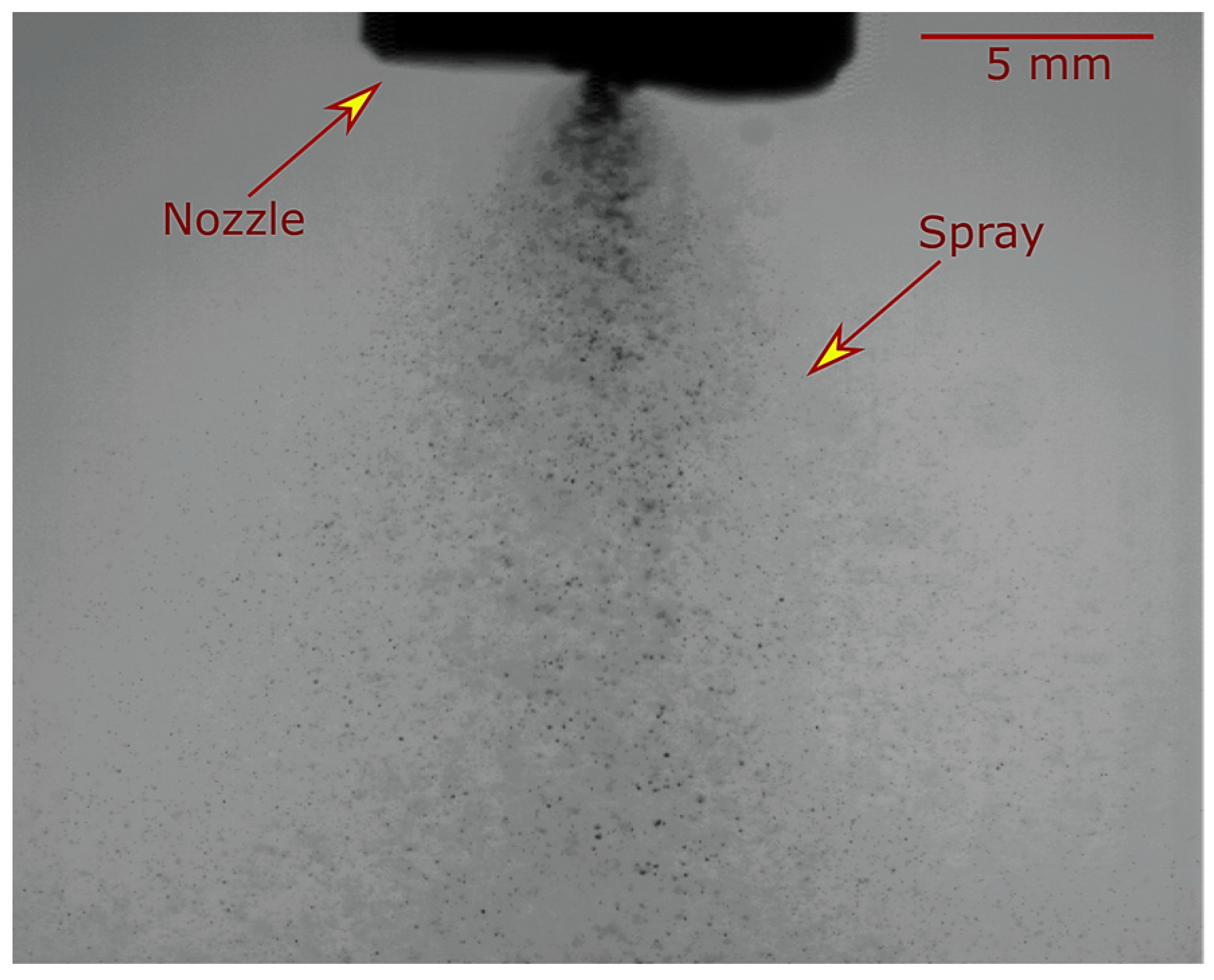
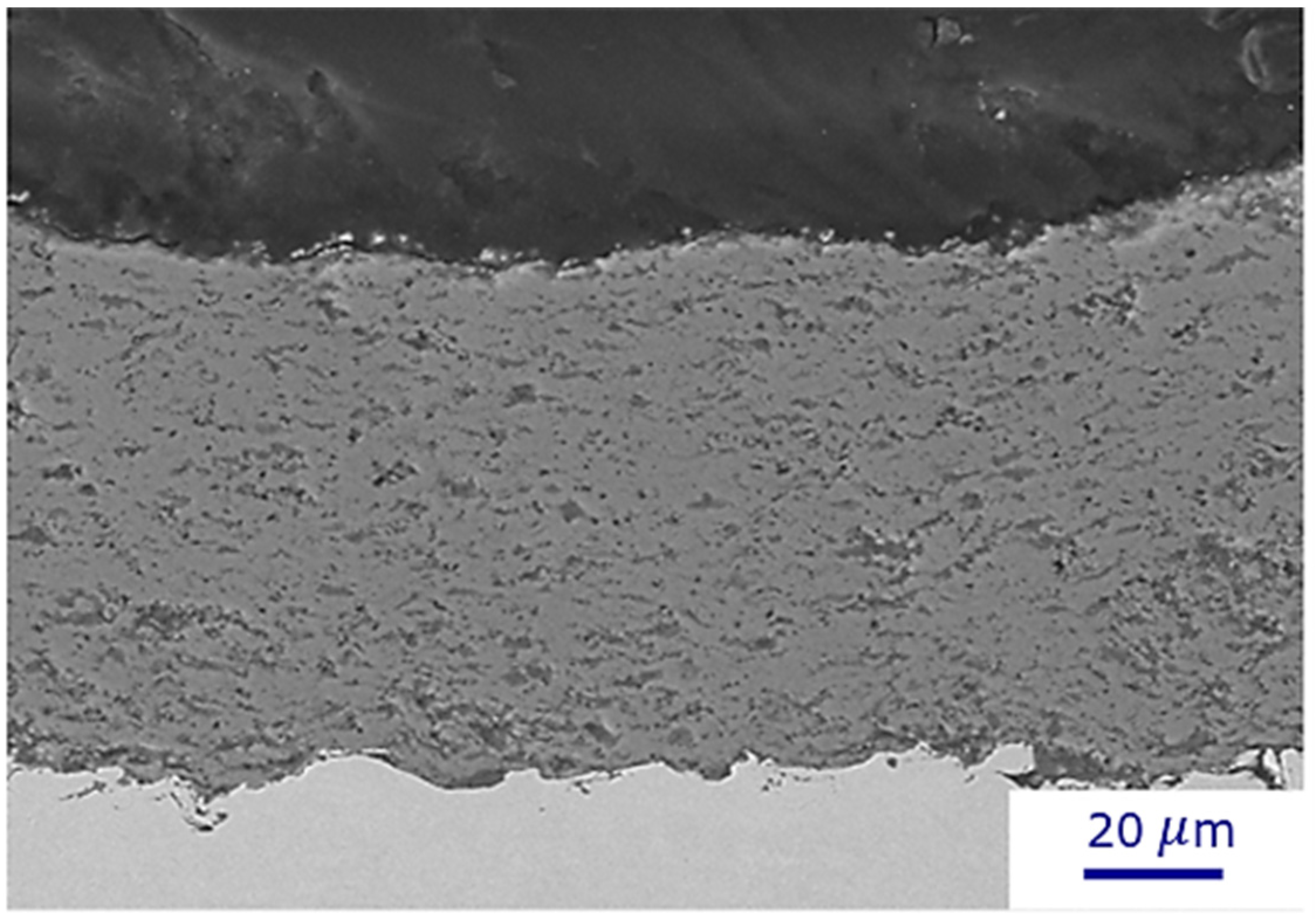


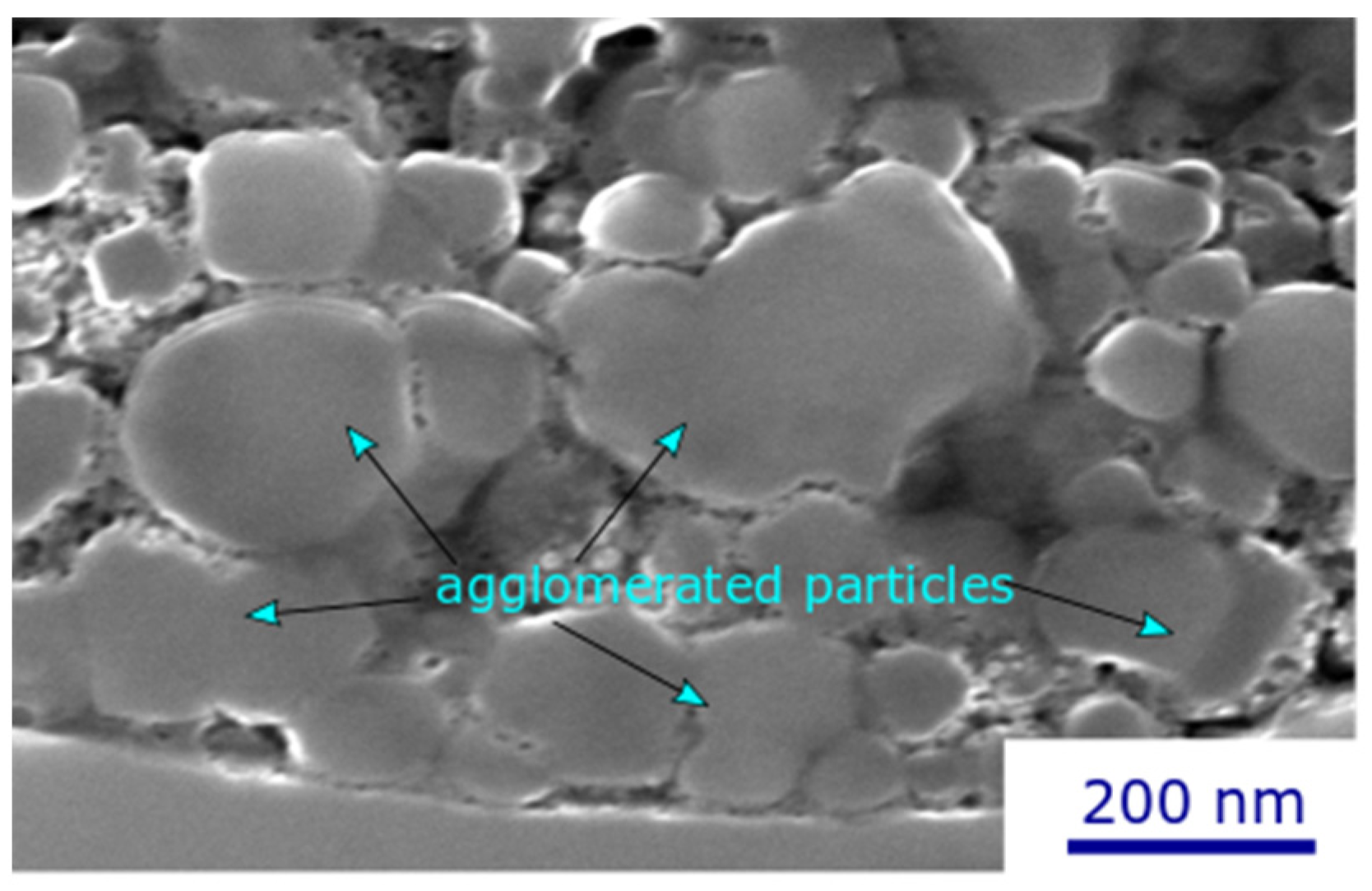
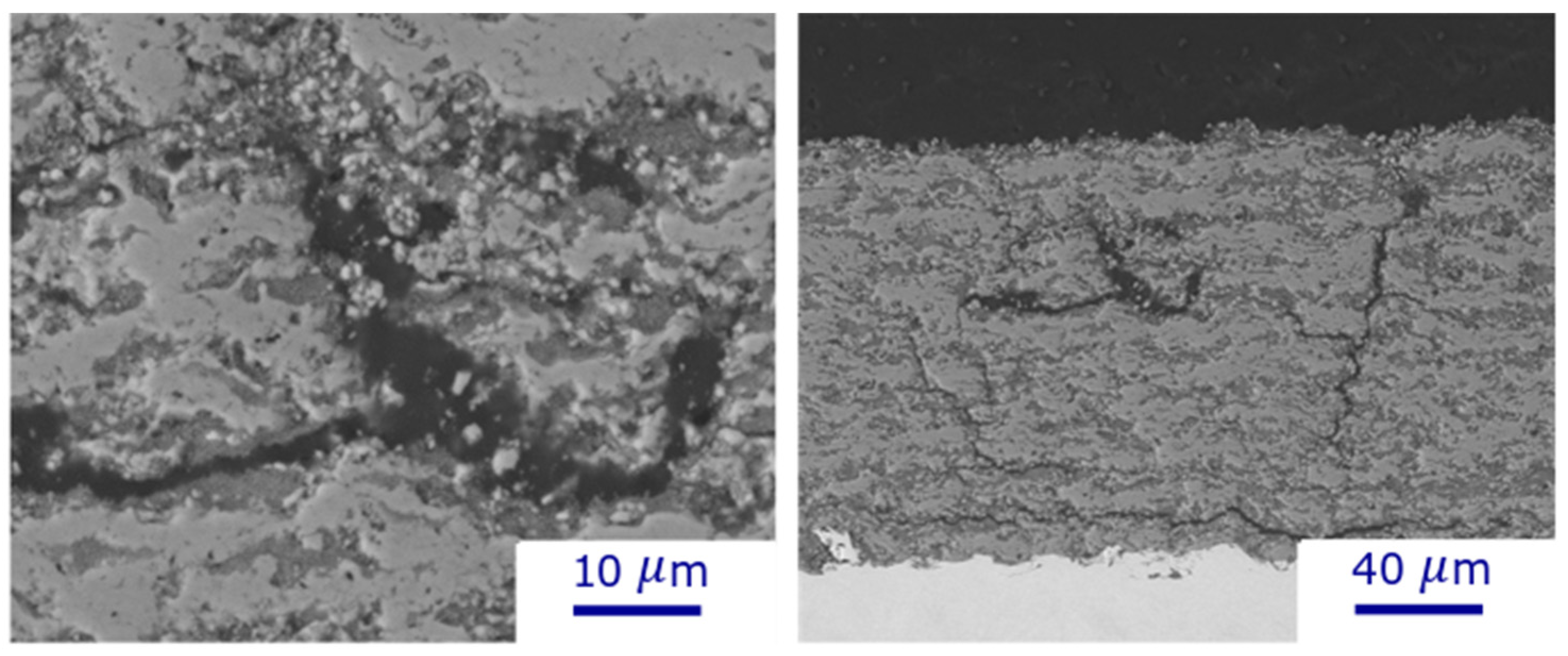
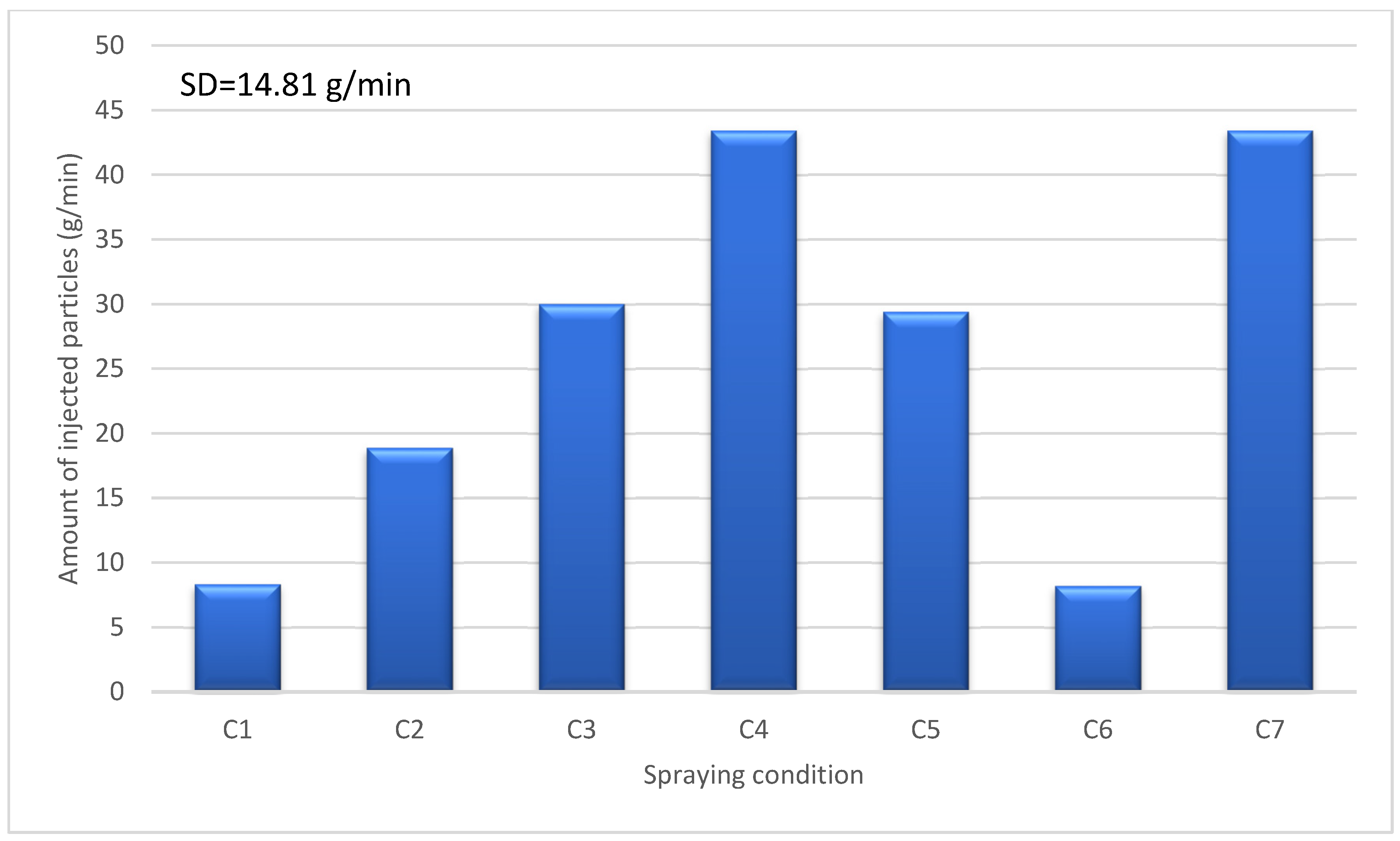
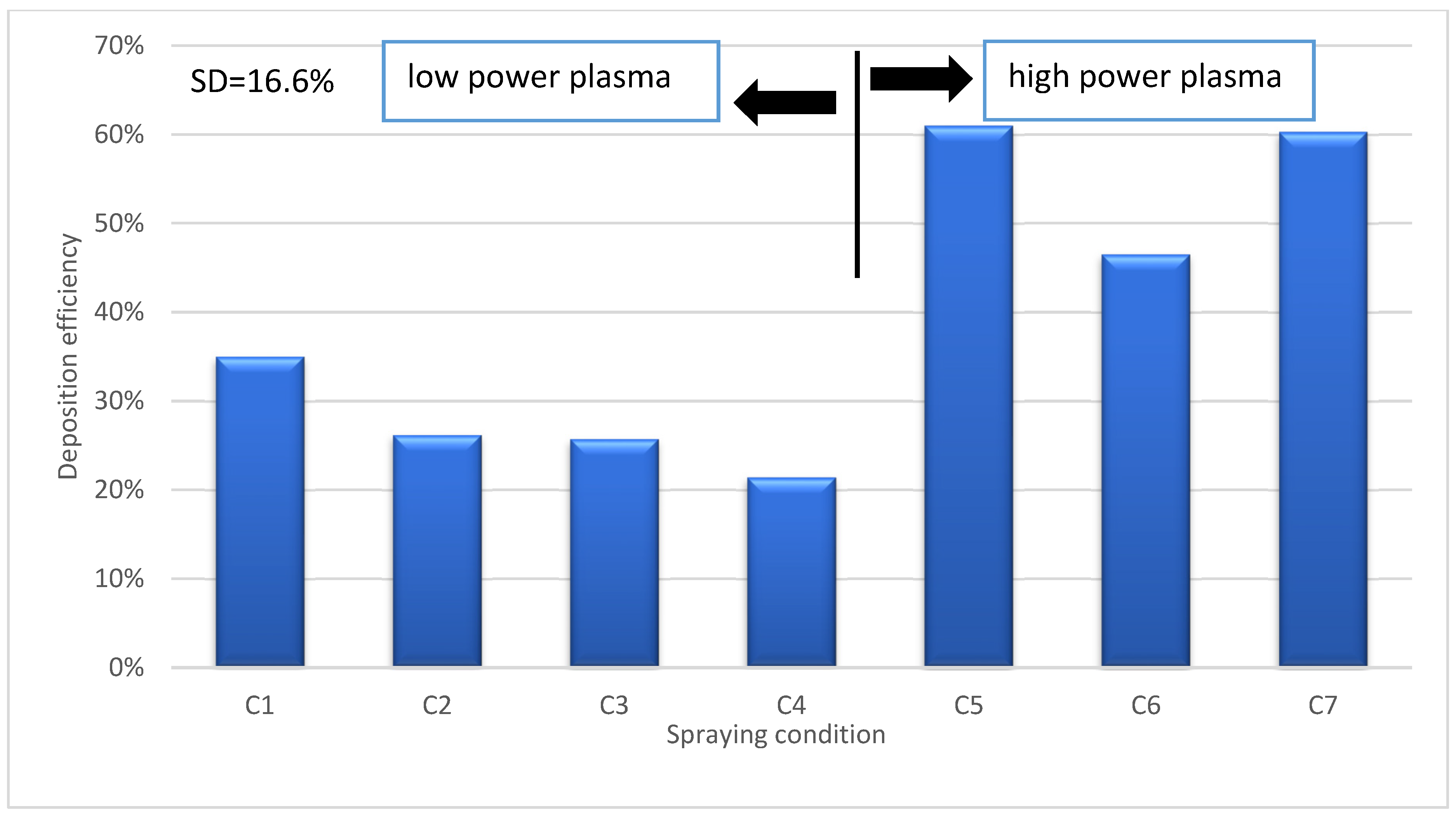
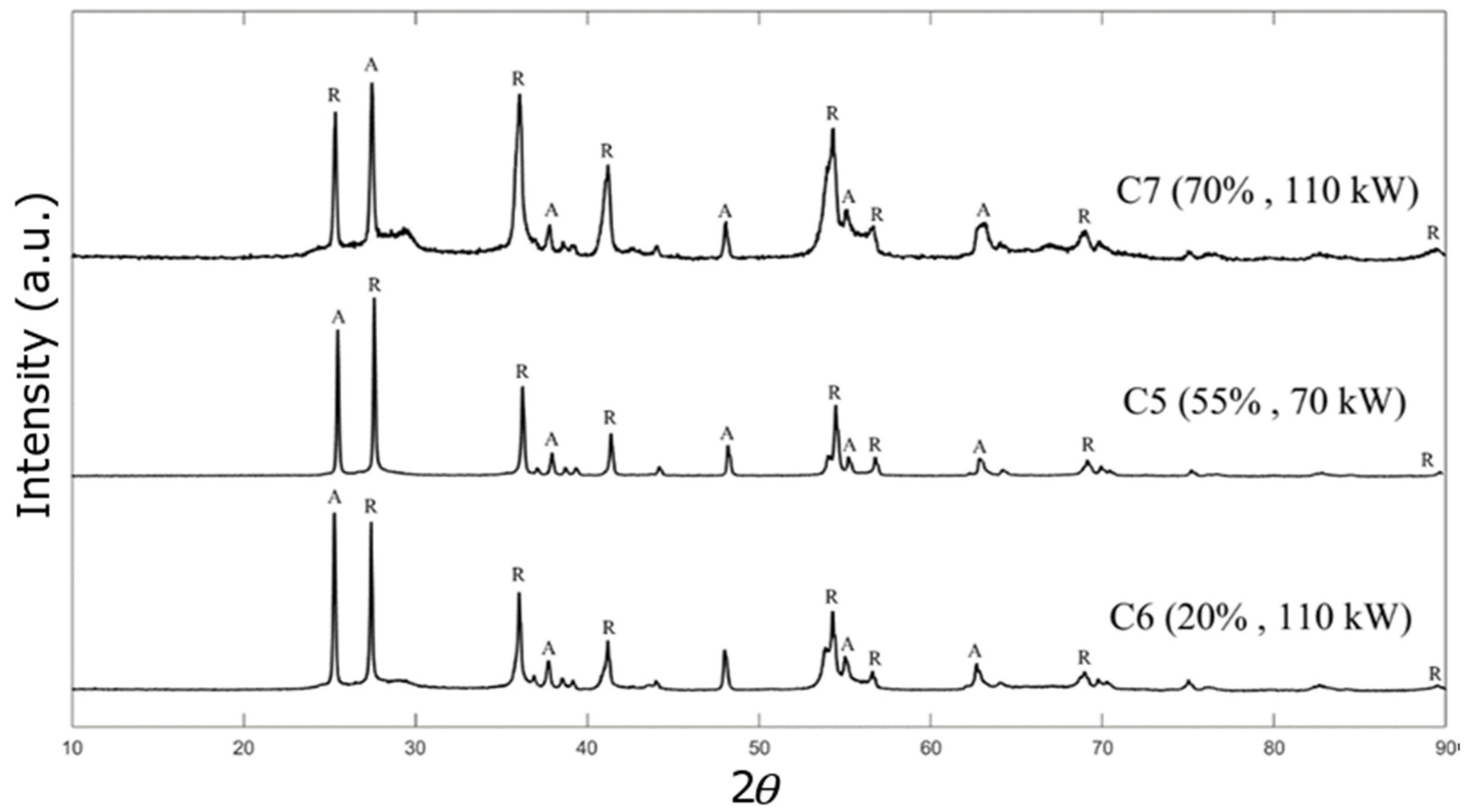
| Sample | Plasma Power (kW) | Gas Flow Rate (SLPM) | Current (A) | Suspension Concentration (wt%) | Feed Rate (mL/min) | Density (g/cm3) | Spray Time (s) | Rotating Sample Holder Speed (RPM) | Coating Thickness (μm) |
|---|---|---|---|---|---|---|---|---|---|
| C1 | 33 | Ar/H2 | 600 | 20 | 34–36 | 1.19 | 45 | 60 | 55 |
| C2 | 40 | 32–34 | 1.43 | 30 | 115 | ||||
| C3 | (50, 3.5) | 55 | 30–32 | 1.76 | 15 | 100 | |||
| C4 | 70 | 28–30 | 2.14 | 10 | 70 | ||||
| Sample | Plasma Power (kW) | Gas Flow Rate (SLPM) | Total Gas Flow Rate (SLPM) | Suspension Concentration (wt%) | Flow Rate (mL/min) | Density (g/cm3) | Spray Time (s) | Rotating Sample Holder Speed (RPM) | Coating Thickness (μm) |
|---|---|---|---|---|---|---|---|---|---|
| C5 | 70 | Ar/N2/H2 | 180 | 55 | 30–33 | 1.7 | 10 | 60 | 140 |
| 45/45/10 | |||||||||
| C6 | 110 | Ar/N2/H2 | 220 | 20 | 34–36 | 1.17 | 30 | 180 | 55 |
| C7 | 45/45/10 | 70 | 28–30 | 2.14 | 10 | 120 | |||
| Samples | Anatase (%) | Rutile (%) |
|---|---|---|
| C1 | 59.4 | 40.6 |
| C2 | 52.8 | 47.2 |
| C3 | 50.3 | 49.7 |
| C4 | 66.9 | 33.1 |
| C5 | 35.7 | 64.2 |
| C6 | 48.1 | 51.9 |
| C7 | 38.2 | 63.9 |
Disclaimer/Publisher’s Note: The statements, opinions and data contained in all publications are solely those of the individual author(s) and contributor(s) and not of MDPI and/or the editor(s). MDPI and/or the editor(s) disclaim responsibility for any injury to people or property resulting from any ideas, methods, instructions or products referred to in the content. |
© 2024 by the authors. Licensee MDPI, Basel, Switzerland. This article is an open access article distributed under the terms and conditions of the Creative Commons Attribution (CC BY) license (https://creativecommons.org/licenses/by/4.0/).
Share and Cite
Amrollahy Biouki, S.; Ben Ettouil, F.; C. Liberati, A.; Dolatabadi, A.; Moreau, C. Microstructure of Deposits Sprayed by a High Power Torch with Flash Boiling Atomization of High-Concentration Suspensions. Materials 2024, 17, 1493. https://doi.org/10.3390/ma17071493
Amrollahy Biouki S, Ben Ettouil F, C. Liberati A, Dolatabadi A, Moreau C. Microstructure of Deposits Sprayed by a High Power Torch with Flash Boiling Atomization of High-Concentration Suspensions. Materials. 2024; 17(7):1493. https://doi.org/10.3390/ma17071493
Chicago/Turabian StyleAmrollahy Biouki, Saeid, Fadhel Ben Ettouil, Andre C. Liberati, Ali Dolatabadi, and Christian Moreau. 2024. "Microstructure of Deposits Sprayed by a High Power Torch with Flash Boiling Atomization of High-Concentration Suspensions" Materials 17, no. 7: 1493. https://doi.org/10.3390/ma17071493






